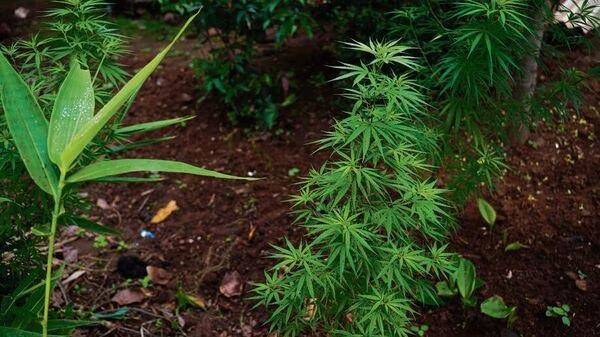Cannabis

- 26 Mar 2024
Why is it in the News?
During the celebration of Holi across India, Bhang, derived from the Cannabis sativa plant or true hemp, is widely favored for consumption.
What is Cannabis?
- Cannabis is found mainly in the Indo-Gangetic plains – in Himachal Pradesh, Punjab, Haryana, Uttar Pradesh, Bihar, and West Bengal – along with the Deccan region.
- Cannabis is termed Ganzai in Telugu, Ganja in Tamil, and Bangi in Kannada.
- The cannabis plant can be 4 to 10 feet tall at maturity.
- Its plant also grows on wastelands and can easily be spotted on roadsides.
- Three products can be obtained from the plant – fiber, oil, and narcotics.
- Bhang is obtained from the seeds and leaves of the plant, which are reduced to powder.
- Then, the powder is filtered and prepared for drinking, mixed often with cold, flavored milk or thandai on Holi.
Additional Uses and Benefits of Cannabis:
- According to the Indian Council of Agricultural Research (ICAR), cannabis ash can be applied to animals' skin in cases of hematoma, a condition characterized by blood clotting outside of blood vessels.
- Hemp-seed oil is employed in varnish industries as a substitute for linseed oil and in soft soap manufacturing, as well as possessing numerous medicinal properties.
- In Himachal Pradesh, cannabis cultivation is concentrated in Chhota/Bada Bhangal of Kangra and the Karsog area of Mandi district.
- While cultivating cannabis for addictive narcotics is illegal, states permit regulated cultivation for industrial or horticultural purposes, focusing on fiber and seed extraction.
- Cannabis-based treatments, such as bhang application on paddy seeds, can enhance germination and control threadworms in paddy nurseries, particularly in the temperate regions of Jammu and Kashmir.
- Heated and crushed cannabis leaves are often transformed into a paste to alleviate pain from a honey bee or wasp stings.
